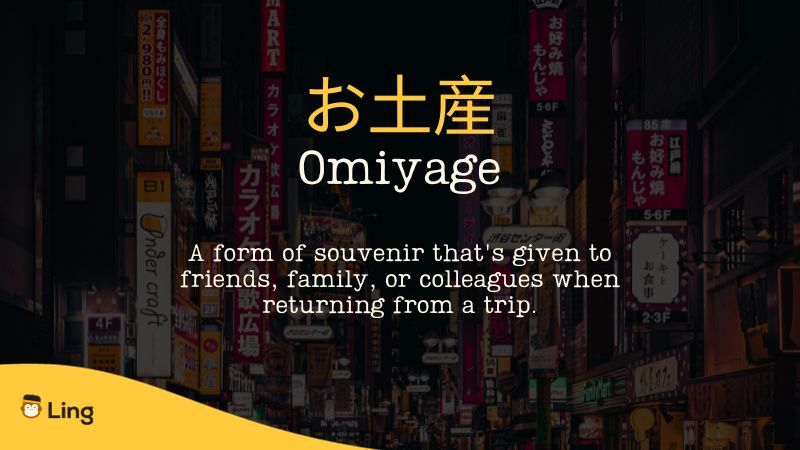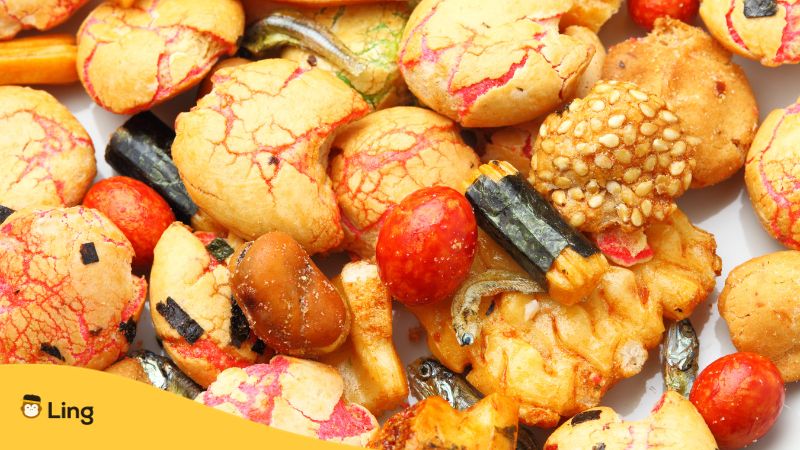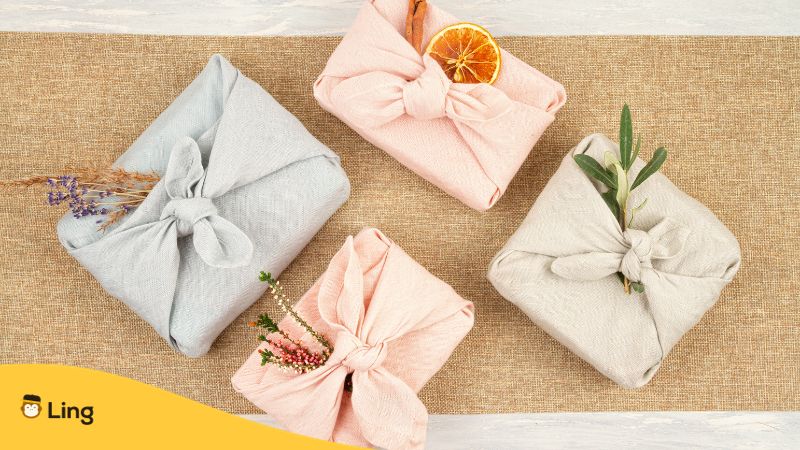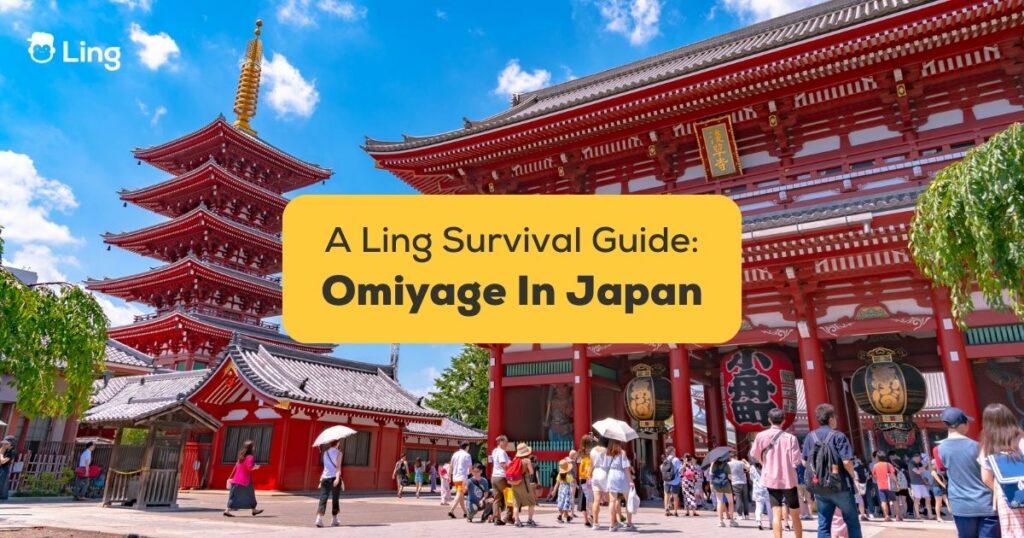Have you ever returned from a trip abroad laden with souvenirs for friends and family back home? This popular custom is called お土産 or omiyage in Japanese. More than just souvenirs, omiyage are small gifts presented when returning from a trip or as a thoughtful token of appreciation.
The cultural practice of omiyage-giving dates back centuries in Japan. Even the famed haiku poet Matsuo Basho wrote about presenting omiyage to his disciples in the 17th century. For the Japanese, the act of presenting omiyage is infused with meaning – it expresses gratitude, consideration, and connection.
I personally experienced the significance of this tradition when visiting my friends in Tokyo last year. As I presented omiyage of Philippine dried mangoes to them, I felt that simple gesture strengthening our bond even across the miles that separate us. The smiles that lit up their faces communicated more than any Arigatou (ありがとう) as they appreciated the thought behind the humble gifts.
In this blog, I seek to explore the time-honored tradition of giving and receiving omiyage in Japan. What are its origins and customs? What do you need to know to pick the perfect omiyage? What are some popular varieties for any taste or budget? Join me as we unravel the distinctive culture around this unique Japanese tradition.
Table of Contents

What Is Omiyage In Japanese?
Translating literally to “product from a visited place,” omiyage refers to small gifts presented when returning home from a trip or special event. The kanji (Chinese character) used are 土 and 産, which means “soil” or “earth” and “product” or “delivery,” representing the idea of a local specialty gift connected to the unique soil of a region. This epitomizes the deeper cultural significance of omiyage in Japan compared to casual souvenirs picked up on vacation elsewhere.
Unlike quickly grabbing souvenirs at random, omiyage requires research and planning beforehand. When traveling domestically, Japanese tourists take note of specialty local delicacies that family or colleagues may enjoy. The quality, presentation, and price range also factor into finding the perfect omiyage fit for both the giver and the receiver. Rather than cheap trinkets, omiyage focuses more on consumable treats from places you actually visited, like baked goods, sweets, fruit, and teas.
For instance, if you visited Fukuoka, Japan, an ideal omiyage would be mentaiko-flavored senbei (rice crackers). If you’re in Tokyo, you may also consider the famous Tokyo Banana as an omiyage. See how the omiyage differs from one plan to another? This is because every region in Japan usually has its own unique flavor, specialty, and ingredient. Their meibutsu (名物), or specialty, is available at their local gift shops, temples, airports, and train stations.

Popular Japanese Omiyage Gifts
When it comes to omiyage, food items reign supreme. Japanese sweets, snacks, fruits, and teas make for ideal edible omiyage souvenirs from any region. Let’s explore some of the classics:
- Bakeware – Famous for its hot springs, the town of Arima near Kobe produces gingerbread cookies called “Arima Ichigo.” The iconic Tokyo banana cake needs no introduction.
- Confectionery – Locally made wagashi matcha sweets from Kyoto and Uji green tea are perennial favorites. Light, crunchy yatsuhashi from Nara and soft dorayaki pancakes are also widely loved.
- Snacks – Rice crackers or okaki from all over Japan make popular omiyage. Examples are soy sauce-flavored cracker senbei from Niigata and shrimp & seaweed senbei from Fukuoka.
- Fruits – Japan’s fruit omiyage variety by season and region seems endless. Summer’s shine muscat grapes, Fuji apples in fall, plump strawberries in winter – all beautifully packaged.
- Tea – Other than the famed Uji matcha and sencha, look for regional specialty teas like frothy melon kintoki from Yubari or black soybean tsukigase cha.
If you are unsure of what to get, you can never go wrong with snacks for omiyage! To help you out, check the table below listing perfect Japanese gift snack ideas by region:
Omiyage Etiquette In The Japanese Culture
While giving omiyage is a wonderful act of thoughtfulness, who should receive omiyage, and what’s appropriate to give? Follow these key etiquette guidelines when selecting and presenting omiyage in Japan:
- Recipients – Typical omiyage recipients include co-workers, employers, teachers, family, and friends. Gifts for family/close friends are more personal.
- Cost – Spending ¥1,000-3,000 per omiyage gift is common. Higher budget for bosses/clients. Keep under ¥5,000 as very expensive gifts could seem burdensome.
- Presentation – Carefully wrap omiyage in decorative paper/bags, often available in-store. Place in a gift box and present respectfully with both hands.
- Timing – Give omiyage as soon as possible when returning from your trip, so it’s fresh. Accompany with stories about your travels.
- Appropriateness – Choose general omiyage safest for professional relationships (e.g snacks). Give alcohol only if you know the recipient drinks.
- Reciprocation – Custom dictates omiyage recipients will eventually reciprocate with their own gift. Starts a positive cycle of exchange.
Keep in mind thoughtfulness trumps cost in Japanese gift culture. With good intentions and following etiquette, your omiyage will delight recipients.

What To Say When Giving Omiyage
In Japanese culture, it is customary to downplay the significance of an omiyage gift even if you put much thought into selecting it. Here are some humble expressions to use when presenting omiyage, along with this translation:
- 大したものじゃないんですが…
(Taishita mono janai desu ga…)
“It’s not much, but…”
You can simply trail off after these phrases or add どうぞ (douzo), meaning “please accept this.” The recipient will politely decline before accepting the omiyage. It’s also thoughtful to prepare a brief explanation in Japanese of what the omiyage is if it’s not self-evident:
- これは○○の名物の△△です
(Kore wa no meibutsu no desu)
“This is the specialty from “
Following cultural norms for humility while giving omiyage may feel unfamiliar at first. But this polite ritual is key to omiyage etiquette in Japan.
Beware Of These Omiyage Culture No-Nos
While omiyage gifting traditionally brings joy, a few insensitive blunders could sour the recipient’s experiences. For instance, the numbers 4 and 9 are considered very unlucky in Japan when gifting omiyage. This stems from the following linguistic associations:
- Four (shi) sounds similar to the word for death (shi)
- Nine (ku) echoes the word for suffering/pain (ku)
As such, avoid gifting omiyage in sets of 4 or 9 pieces. Sets of 5 or 10 are much safer choices. While younger Japanese may not adhere to superstitions so strongly today, it’s best not to risk offense by avoiding inauspicious fours and nines. Opt for sets using auspicious numbers like seven or eight instead.
Here are other omiyage etiquette mistakes to avoid:
- Unsuitable Foods – Don’t gift meat or alcohol without confirming diet preferences and drinking habits firsthand.
- Expired Items – Perishable omiyage like baked goods going stale or fruit rotting prematurely leaves a bad impression. Check expiry dates.
- Thoughtless Gifting – Giving the same standard omiyage in bulk to every single person shows a lack of personalization.
- Cheap or Flimsy Items – Omiyage shouldn’t feel “discount” bin quality. Stick to reputable brands known for quality.
- Leftovers – Gifting open packages or unfinished items you didn’t want for yourself sends the wrong message.
- Combs (kushi) – The word echoes “suffering + death” to the Japanese ear, which is a terrible omen.
When in doubt, ask a Japanese friend if the number of any omiyage gifts you plan to purchase would be appropriate or not. Err on the side of caution with this relatively simple custom.
Ready To Find The Perfect Japanese Omiyage Gifts?
As we learned here, the tradition of omiyage reveals so much behind the cultural mindset of the Japanese – the emphasis on thoughtfulness, reciprocity, respect, and connection. What may seem like a simple exchange of small gifts, in fact, strengthens social bonds in immeasurable ways.
I hope this glimpse into the world of omiyage gives you an inspiration to embrace this wonderful custom, whether during travels in Japan or gift-giving occasions in your own country. If you’re visiting Japan soon, being able to explain your omiyage gifts takes things to the next level. So, our advice?
Start picking up essential Japanese vocabulary and phrases with fun, quick lessons on the Ling app! Use it for at least 10 minutes a day and develop your Japanese language skills at your own pace to navigate this Asian country with more confidence. Don’t limit yourself – download Ling to learn practical Japanese language skills from anywhere in the world!































































